
Around the Agency 10-1
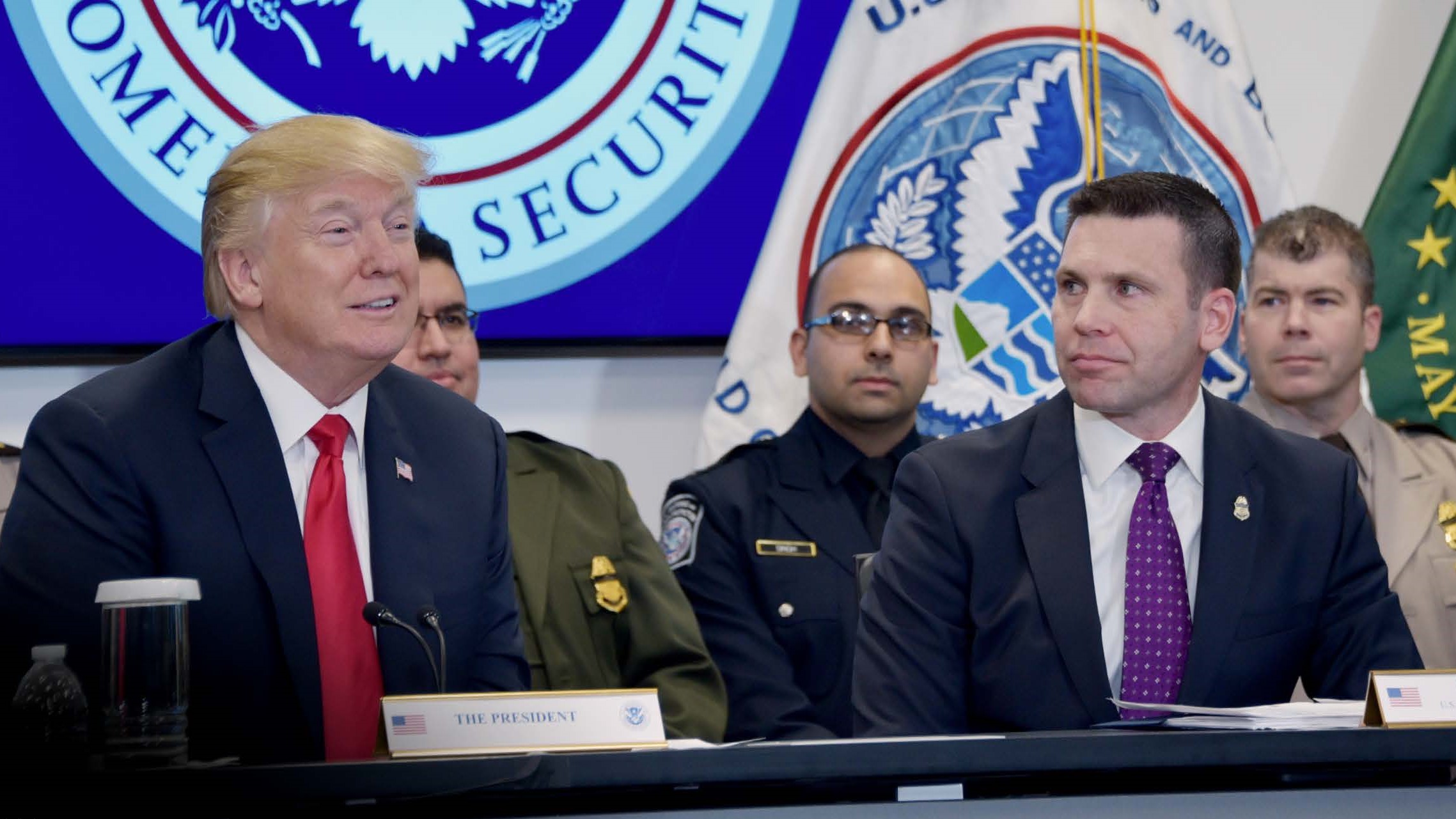
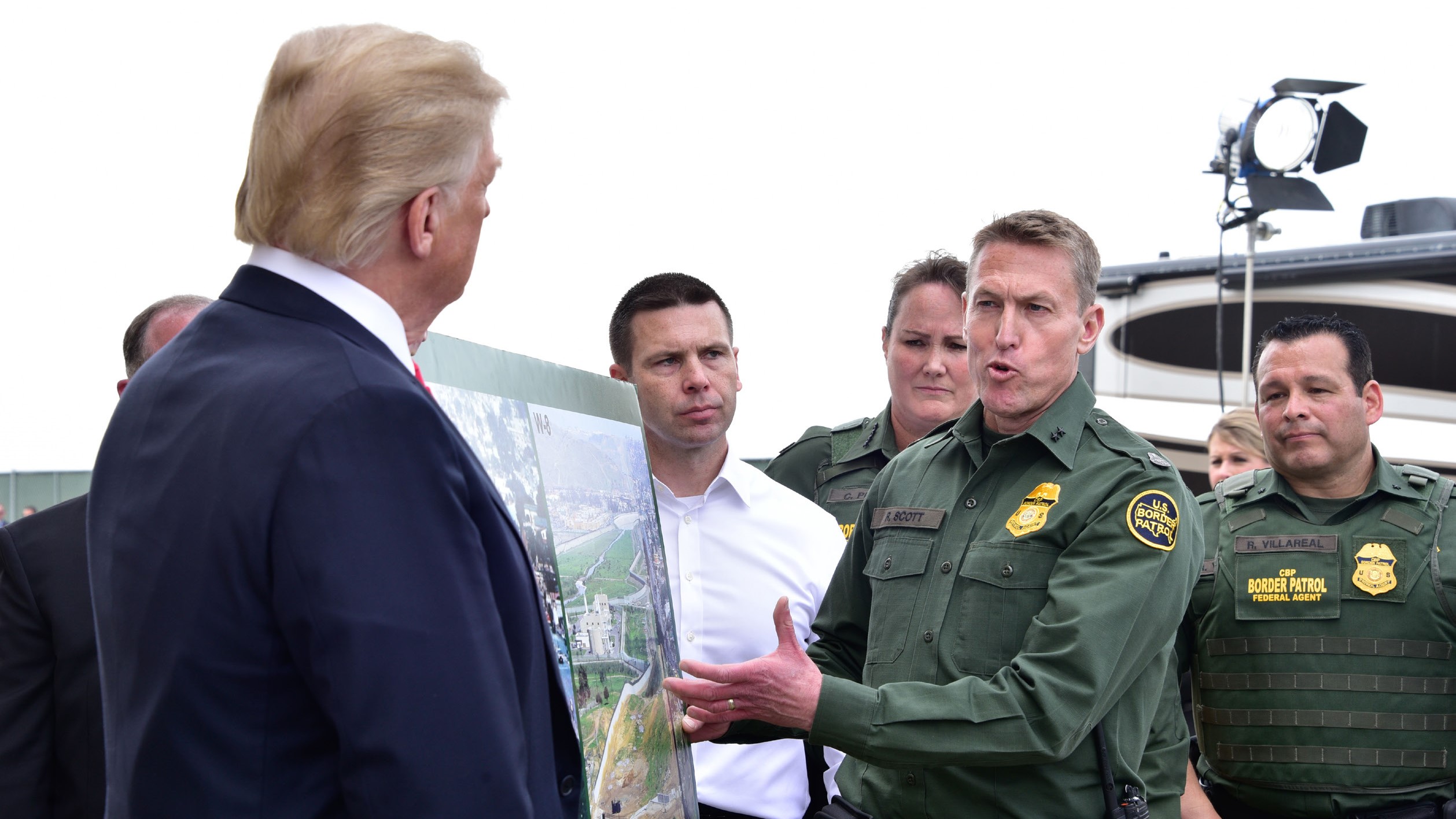
President Trump Praises Work of National Targeting Center, Promises More Support
By John Davis
A strong nation requires secure borders, and U.S. Customs and Border Protection’s National Targeting Center is a key part of the border security mission. That was the message President Donald Trump delivered Feb. 2 to the people working at the center in Sterling, Virginia.
"This is quite a facility," the president told a group, which included Secretary of Homeland Security Kirstjen Nielsen, CBP’s Commissioner Kevin McAleenan, CBP officers, Air and Marine and Border Patrol agents, senior officials from the Departments of Justice and State, as well as members of the press. "These are the men and women [those at the National Targeting Center] that really know what’s happening and know how to keep America safe. They’re real professionals."
After a tour of the facility, President Trump called for tougher enforcement of immigration laws, in particular, against the drug smugglers the center helps to target. Commissioner McAleenan briefed the president that illegal immigration numbers dropped in the first few months shortly after his inauguration, primarily due to the administration’s tougher immigration stance. Fiscal Year 2017 marked a 45 year low in U.S. Border Patrol apprehensions. However, increases in illegal border crossing attempts since then has prompted concern.
"We’ve seen a marked increase in hardened smugglers attempting to bring hard narcotics across our borders and into our communities," said Commissioner McAleenan. "We’ve had increases in every category: cocaine, heroin, methamphetamine, and obviously fentanyl, a very significantly potent synthetic opioid involved in so many overdoses in the United States."
Officers at the border and ports of entry check more than 1 million travelers and $6.3 billion worth of imported products on average every day. The sheer volume of that traffic – ranging from cargo containers to mail and express consignment packages to individuals crossing the border – makes it impossible to inspect every entry. The center uses CBP’s own seizure analysis and intelligence information, along with data gathered from other federal, state and local law enforcement sources, to target travelers and cargo that pose the highest risk to U.S. security, including the threat of illegal immigration and drugs. CBP also partners with the U.S. Postal Service and commercial express carriers to target possible contraband coming into the country.
In addition to promoting efforts to address illegal immigration, including funding to build and enhance a border wall, the president repeated his commitment to give those who protect the nation’s borders the tools they need to get the job done.
"We’ve really put a lot behind [the National Targeting Center], and we’re going to be putting a lot more behind it," added President Trump.
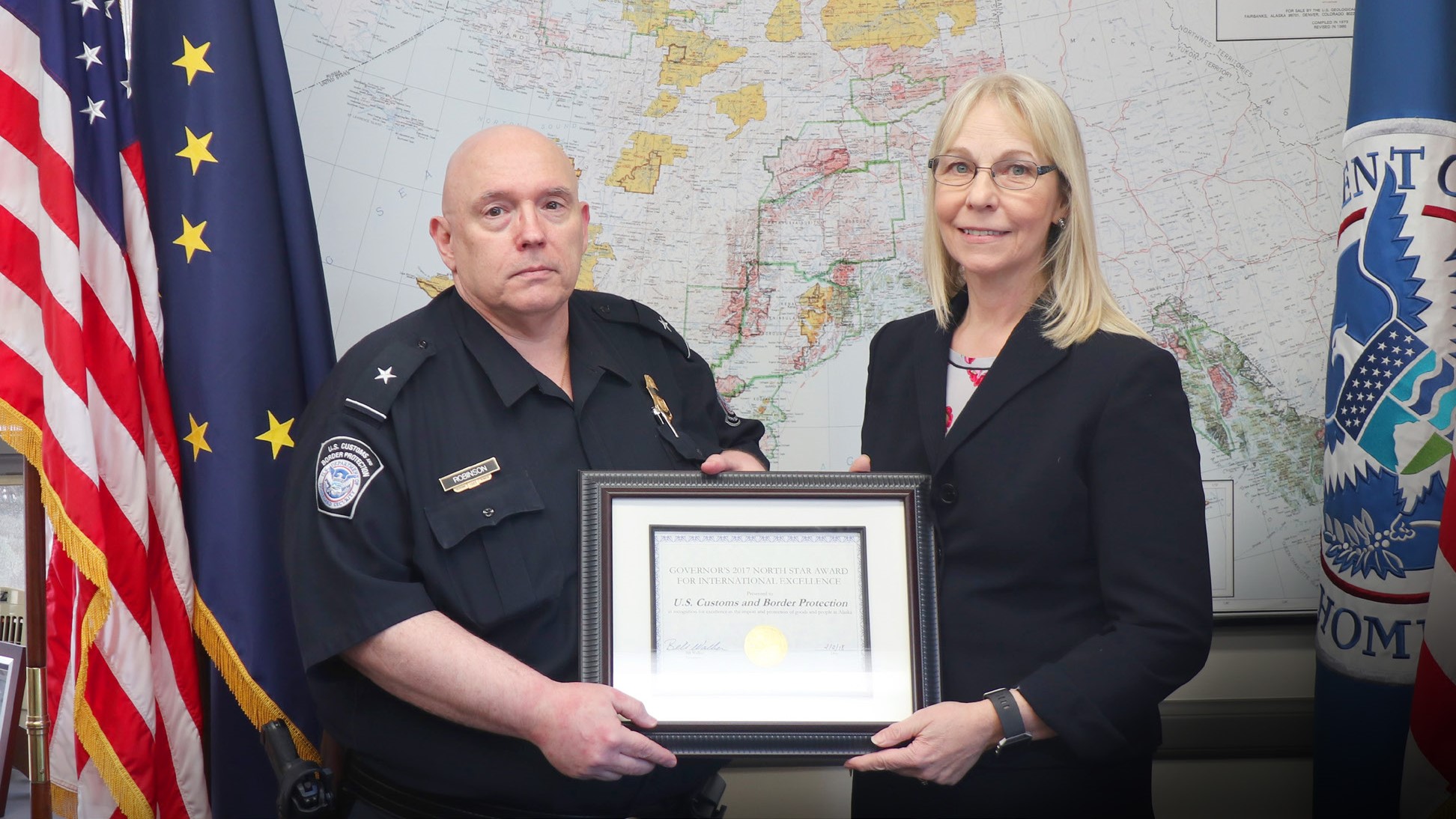
President Trump visits border wall prototypes
Replacement wall construction underway in El Centro
By John Davis
Walls work and are vital to the integrity of the nation.
That was the message President Donald Trump delivered to the public after reviewing U.S. Customs and Border Protection’s wall prototypes on the border in Otay Mesa, California.
"If you don’t have a wall system, we’re not going to have a country," said President Trump as he toured the eight, 30-foot high border wall prototypes and mock-ups.
Following construction of eight border wall prototypes, CBP tested, assessed and evaluated the features and attributes of each prototype to identify which of them most effectively impede and deny illegal crossings. The assessment and evaluation included testing the eight wall prototypes, input from Border Patrol agents and an engineering analysis.
The President was joined by Homeland Security Secretary Kirstjen Nielsen, CBP Commissioner Kevin McAleenan, Acting U.S. Border Patrol Chief Carla Provost and San Diego Sector Chief Patrol Agent Rodney Scott.
President Trump asked Scott, a veteran agent who was in the same area more than 25 years ago, what was the situation before the existing walls were constructed.
"There was effectively no border in San Diego," said Scott. "It was a chaotic situation," adding the current fence, made of scrap metal, has at least helped in deterrence. "It changed our environment. We decreased illegal cross-border traffic by 95 percent."
President Trump said the new wall will improve the Border Patrol’s ability to secure the border even further. "When we put up the real wall, we’ll stop 99 percent, maybe more than that."
Scott added the current barrier has also helped economic development on both sides of the border.
"They re-established law and order in San Diego when they put up a wall," said President Trump.
As the President visited the prototypes today, construction workers continued their work in El Centro, California, to replace 2.25 miles of the old barrier. Located about two hours East of Otay Mesa, the new wall will be 30-feet high. The project also includes around 2.25 miles of unpaved roads.
The wall replacement is one of Border Patrol’s highest priority projects.
The barrier was built in the 1990s out of recycled scraps of metal and old landing mat, steel pads once used by the military as landing platforms for helicopters.
Although the existing wall has proven effective at deterring unlawful cross border activity, human and drug smuggling organizations damaged and breached this makeshift version of a border wall several hundred times during the last two years, resulting in costly repairs.
El Centro Sector continues to experience a high number of apprehensions of illegal immigrants and drug smuggling. In fiscal year 2017, the El Centro Sector apprehended 18,633 illegal aliens, seized 5,554 pounds of marijuana, 483 pounds of cocaine, 1,526 pounds of methamphetamine and 2,521 ounces of heroin. During that fiscal year, there were 21 assaults against El Centro Sector agents.
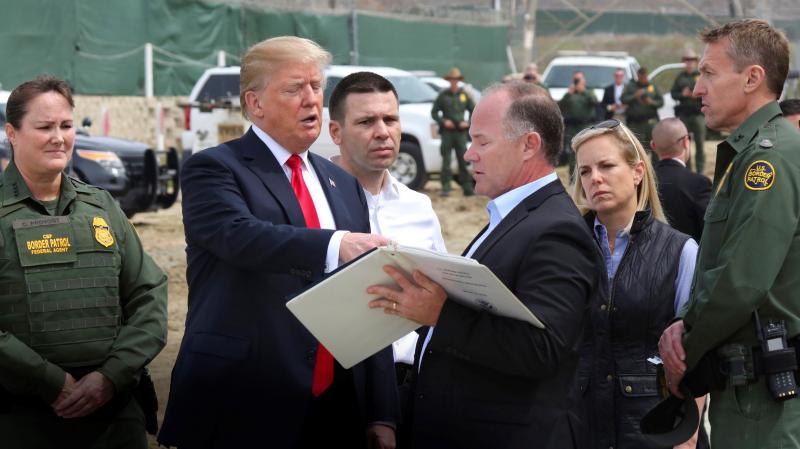
President Trump discusses specific details of the border wall prototypes with Project Manager James O’Loughlin, alongside DHS Secretary Nielsen and CBP Commissioner McAleenan. Photo by Ralph Desio
The construction of bollard wall design maintains agents’ visibility and better ensures their safety as they patrol along the border.
The President and Secretary Nielsen expressed their appreciation for what CBP and U.S. Immigration and Customs Enforcement have done in the area.
"CBP and ICE put their lives on the lines every day to protect our country," said Secretary Nielsen. "For that, I’m forever grateful. We will build this wall."
"I want to thank ICE and the Border Patrol agents for their incredible work," said President Trump. "It’s a dangerous job; it’s a tough job. We’ve cut down on border crossing because of what the Border Patrol has done."
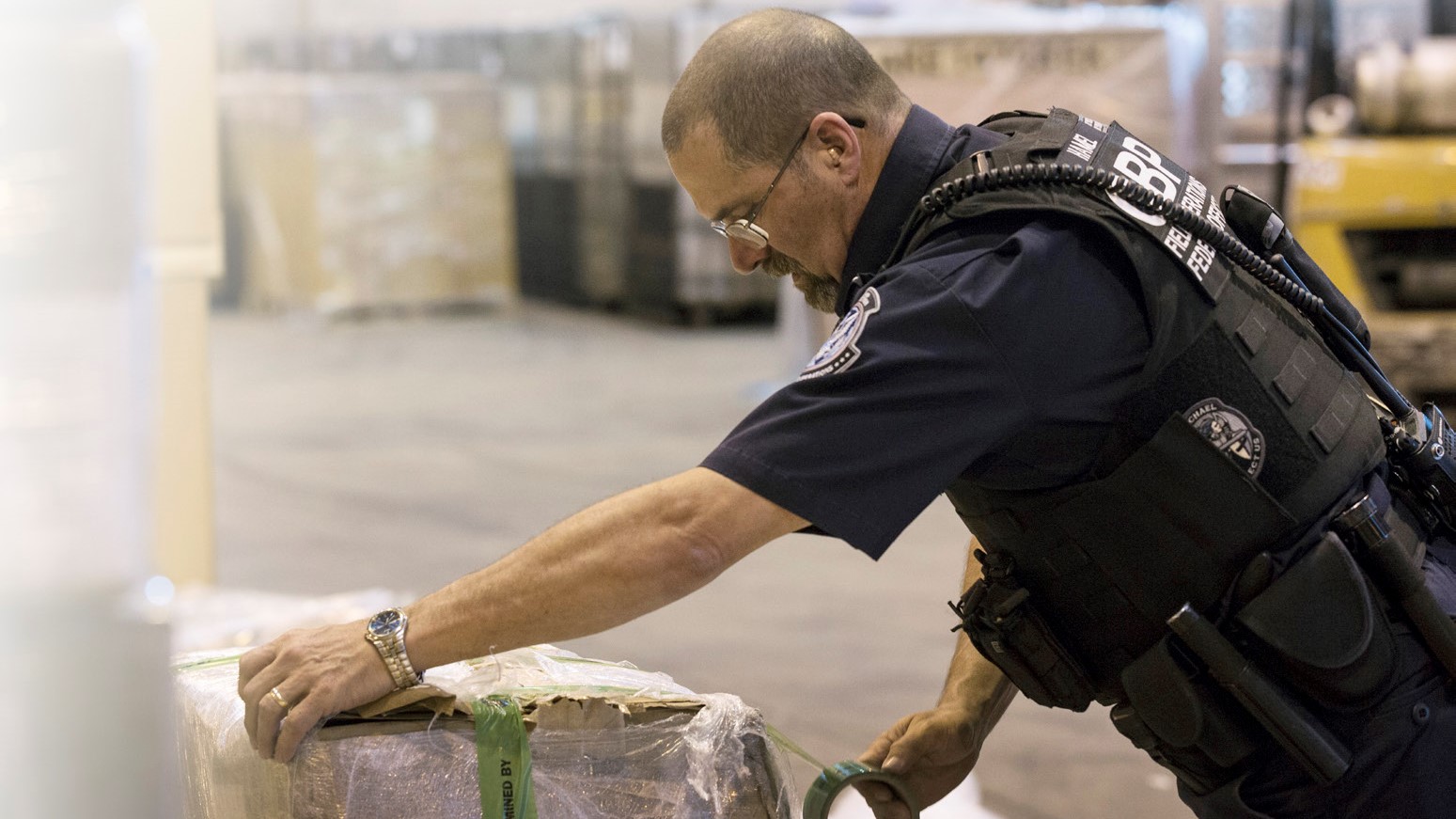
Alaskan Governor honors Office of Field Operations
By Paul Koscak
Alaska may be America’s last frontier, but it’s also a state of big enterprise and CBP’s Office of Field Operations has been at the forefront of some of the state’s biggest projects. From pipelines to rail lines, from international partnerships to efficient and friendly incoming traffic processing, OFO has made its mark.
"We’re Alaskans too," Alaska Area Port Director Lance Robinson said. "We want to see business succeed."
OFO’s long-time guidance and support to local officials and its commitment to move the state’s economy ahead didn’t go unnoticed. In January, Alaska Governor Bill Walker presented CBP with the Governor’s North Star Award for International Excellence. Considering the agency’s modest footprint—just 86 CBP officers and 98 OFO staff to cover nearly 600,000 square miles—the recognition is truly significant.
Taking care of business
OFO participates in Alberta to Alaska, better known as A2A. It’s an ambitious project to build an 800-mile railroad to transport bitumen, a black petroleum goo from the oil sands of Fort McMurray, Alberta, to Delta Junction, Alaska. Bitumen, which can be as thick as cold molasses or as hard as a hockey puck, will then be will be loaded on ships in Anchorage, exported to Asia and refined into oil.
OFO supports Alaska’s partnership with China with timely clearances. The venture aims to construct a pipeline to bring natural gas 800 miles from the North Slope’s Prudhoe Bay along the Arctic Ocean, to the coast near Anchorage. There, it will be liquefied and shipped to Asia.
On another international project, OFO is working with Canadian customs officials to improve the Alcan reporting station. Alcan sits isolated along the Alaska Highway at the Yukon border, 300 miles from Fairbanks, the nearest major city and 90 miles from Tok, the nearest town.
The place is so remote, the 12 CBP officers who work there and their families live in a self-contained compound at the station. They make a major food run to Fairbanks about once per month.
"We’re fully enclosed," Robinson said. "We have our own power, our own water, our own satellite internet."
OFO is weighing a joint U.S.-Canadian reporting station so resources such as X-ray machines and other equipment can be shared and shifts could double—from two to four officers.
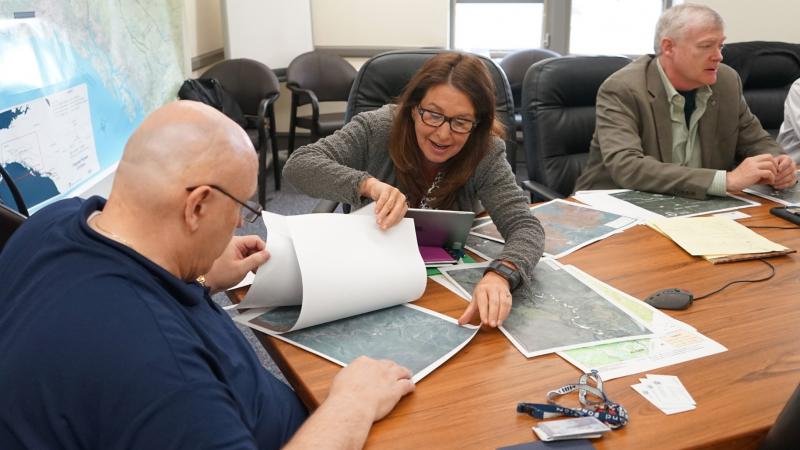
From left, Alaska Area Port Director Lance Robinson and Kelly Johnson, an A2A attorney, review maps in planning for an 800-mile railway to transport bitumen from Alberta to Alaska. Next to Johnson is former Lt. Gov. Mead Treadwell. Photo by Jerry McGee
Servicing Alaska’s immense territory—twice the size of Texas—also means working in some of North America’s harshest conditions. With few daylight hours, winter temperatures can remain well below zero for weeks. Summers can hit sweltering triple digits. Community isolation is prolific.
Alaska’s lack of roads and docks make inspections challenging. It may require flying to a small airfield then a long drive to a port, then taking a skiff to reach the anchored vessel and a climb up the side of the ship by ladder.
"We have the greatest caliber of employees," Robinson remarked. "We get 20 compliments to one complaint. You couldn’t ask for better employees. It takes a special kind of person to be here."
And not just because of the environment. Since there’s no permanent Border Patrol or Air and Marine Operations presence, OFO handles those duties as well. That’s done through partnerships with other federal, state, local and tribal law enforcement.
CBP plays the ACE card, achieves long-term goal
By Marcy Mason
From a trade operations perspective, it was a major milestone for U.S. Customs and Border Protection. In February, CBP completed the final step in automating its cargo processing system, the Automated Commercial Environment or ACE. The system, which was launched more than 15 years ago, was designed to speed up the U.S. import/export process by reducing the processing and approval times of shipments. Not only did ACE eliminate duplicative and burdensome paperwork, it also provided a "single window" that allows businesses to electronically transmit the data required by the U.S. government to import or export cargo.
"ACE has been one of the most complex information technology projects ever undertaken by the federal government," said CBP Commissioner Kevin McAleenan. "It required strong partnerships and collaboration across government and industry."
When ACE was initially conceived in 1993, it was an outgrowth of the Customs Modernization Act, which gave the U.S. Customs Service, one of CBP’s legacy agencies, authorization to modernize its practices. This was done so that the agency could operate more effectively with businesses that had already automated and modernized their importing processes. The new program was intended to help the U.S. government collect duties, analyze and assign risk, and process international shipments coming in and out of the country.
Development of the new system was slow because of multiple challenges. "It was a constantly changing environment," said Brenda Smith, the executive assistant commissioner of CBP’s Office of Trade. "It was no longer just about collecting revenue. We had to be able to identify and manage terrorism threats, import safety threats, and ensure compliance with free trade agreements, which have exploded over the last 10 years. At the same time, we were building the automated systems under some very challenging budget constraints."
But over the last six years, ACE experienced a dramatic turnaround. Buoyed by the strength of political support, additional funding, and a herculean effort by those involved, ACE’s core trade processing capabilities catapulted to completion. To date, more than 5.3 million lines of code were developed to automate all phases of cargo processing and 269 forms have been automated across CBP and its 47 partner government agencies.
Furthermore, the benefits of ACE are materializing. "While it has been a long road from planning to implementation, a streamlined import and export processing system has already proven to be a tremendous benefit for international trade," said Commissioner McAleenan. "During fiscal year 2017, CBP realized an estimated $28 million in processing efficiencies and industry achieved an estimated $52 million in savings."
Likewise, ACE has resulted in many improvements including a 44 percent reduction in wait times for truck processing at land ports of entry and 68 times faster processing of bonds. "The completion of core trade processing in ACE marks a monumental milestone for CBP, the culmination of many years of dedicated partnership and innovation from government employees and the trade community," said Smith. "Through ACE, federal agencies have earlier, automated visibility to ship data, expediting their import or export assessments at the border, which, in turn, speeds the flow of legitimate trade and improves the security, health, and safety of cargo."


